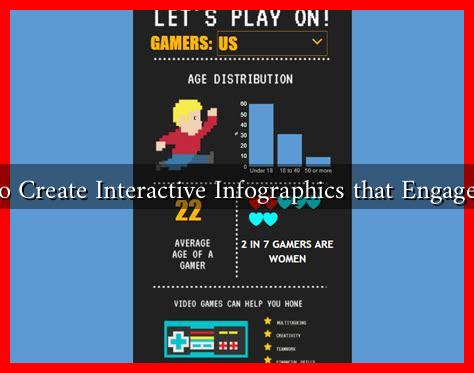-
Table of Contents
How to Create Interactive Infographics that Engage Users
In the digital age, where attention spans are shorter than ever, creating engaging content is crucial for capturing and retaining user interest. One of the most effective ways to do this is through interactive infographics. These visual tools not only present information in an easily digestible format but also encourage user interaction, making the learning experience more engaging. In this article, we will explore how to create interactive infographics that captivate users and enhance their understanding of complex data.
Understanding Interactive Infographics
Interactive infographics are visual representations of information that allow users to engage with the content actively. Unlike static infographics, which simply present data, interactive infographics enable users to explore information through clicks, hovers, and other forms of interaction. This engagement can lead to better retention of information and a more enjoyable user experience.
Key Elements of Effective Interactive Infographics
To create an interactive infographic that resonates with your audience, consider incorporating the following key elements:
- Clear Objective: Define the purpose of your infographic. What message do you want to convey? Understanding your goal will guide your design and content choices.
- Compelling Data: Use accurate and relevant data to support your narrative. Statistics from reputable sources can enhance credibility. For example, according to a study by Statista, visual content is 40 times more likely to be shared on social media than other types of content.
- User-Friendly Design: Ensure that your infographic is visually appealing and easy to navigate. Use a clean layout, consistent color schemes, and readable fonts.
- Interactive Features: Incorporate elements such as clickable buttons, hover effects, and animations to encourage user interaction. These features can help users explore data in a more engaging way.
- Mobile Optimization: With a significant portion of users accessing content on mobile devices, ensure that your infographic is responsive and looks great on all screen sizes.
Steps to Create Interactive Infographics
Creating an interactive infographic involves several steps:
- Research and Data Collection: Gather data from reliable sources. Ensure that the information is up-to-date and relevant to your audience.
- Storyboarding: Plan the layout and flow of your infographic. Sketch a rough draft to visualize how users will interact with the content.
- Design: Use design tools like Adobe Illustrator, Canva, or Piktochart to create your infographic. Focus on aesthetics while ensuring that the interactive elements are functional.
- Testing: Before launching, test your infographic with a small audience. Gather feedback on usability and engagement to make necessary adjustments.
- Promotion: Share your interactive infographic across various platforms, including social media, blogs, and email newsletters, to reach a wider audience.
Case Studies: Successful Interactive Infographics
Several brands have successfully utilized interactive infographics to engage their audience:
- National Geographic: Their interactive infographic on climate change allows users to explore data through maps and animations, making complex information accessible and engaging.
- Spotify: The “Wrapped” campaign uses interactive infographics to present users with personalized data about their listening habits, encouraging sharing and engagement.
Measuring Engagement and Success
To determine the effectiveness of your interactive infographic, track key performance indicators (KPIs) such as:
- Time spent on the infographic
- Click-through rates on interactive elements
- Social shares and engagement metrics
- User feedback and comments
Utilizing tools like Google Analytics can help you gather insights into user behavior and engagement levels.
Conclusion
Creating interactive infographics is an excellent way to engage users and present complex information in an accessible format. By focusing on clear objectives, compelling data, user-friendly design, and interactive features, you can craft infographics that not only inform but also captivate your audience. Remember to test and measure the effectiveness of your infographics to continually improve your content strategy. With the right approach, interactive infographics can become a powerful tool in your content marketing arsenal.

